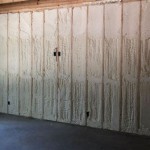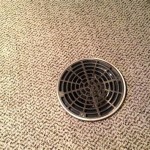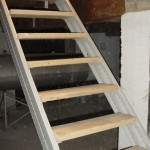How To Install a Basement Window Well Cover
Basement window well covers are essential for protecting basement windows and preventing water, debris, and unwanted pests from entering the home. A properly installed cover improves energy efficiency, safeguards against potential damage, and enhances overall home security. This article provides a comprehensive guide on how to install a basement window well cover, ensuring a secure and effective installation.
Before commencing the installation process, careful consideration should be given to selecting the appropriate window well cover. Several factors influence this decision, including the dimensions of the window well, the material best suited for the climate, and the desired level of protection. Options frequently encompass plastic, metal, and polycarbonate covers, each offering distinct advantages in terms of durability, light transmission, and cost.
Proper preparation is crucial for a successful installation. This involves thoroughly cleaning the window well, gathering the necessary tools and materials, and ensuring the window well is of an appropriate condition. A well-prepared site facilitates a smooth and efficient installation process.
Key Point 1: Measuring and Selecting the Right Window Well Cover
Accurate measurement is the foundation for selecting a properly fitting basement window well cover. Begin by measuring the length and width of the window well opening. It is imperative to measure at the widest points to ensure the cover provides complete coverage and prevents any gaps that might allow debris or water to enter.
When measuring rectangular window wells, measure the length and width as described above. For curved or irregularly shaped window wells, take multiple measurements at different points along the perimeter to identify the maximum dimensions. This will help in selecting a cover with adequate overlap.
Next, consider the height of the window well. This is particularly important if the window well is unusually deep or if you plan to install a dome-shaped cover. A cover that is too shallow may not provide adequate protection or may interfere with the window itself.
Once you have the measurements, explore the available types of window well covers. Flat covers are a basic option, suitable for shallow window wells where minimizing visual obstruction is a priority. Dome-shaped covers provide more vertical clearance and are ideal for deeper wells or situations where more room is needed for egress.
Sloped covers, also known as bubble covers, are designed to allow rainwater and snow to run off easily, preventing pooling. They often have a transparent or translucent design to maximize light transmission into the basement. Choose a cover material that is appropriate for your climate and the level of protection required.
Plastic covers are lightweight and affordable but might not be as durable as metal or polycarbonate options. Metal covers are robust and can withstand heavy snow loads and impacts. Polycarbonate covers offer a good balance of strength, light transmission, and impact resistance.
When selecting a cover, also consider the importance of ventilation. A cover with built-in vents can help to reduce moisture buildup in the window well, preventing mold and mildew growth. If ventilation is not a primary concern, a solid cover can provide better protection against pests and debris.
Finally, verify that the selected window well cover is compatible with your specific window well type. Some covers are designed to fit directly onto the window well, while others require additional mounting hardware or modifications. Ensure that all necessary components are included and that you have the tools and expertise to carry out the installation.
Key Point 2: Preparing the Window Well for Cover Installation
Proper preparation of the window well is essential before installing a cover. This involves cleaning the well thoroughly, addressing any structural issues, and ensuring that the cover will fit securely. Neglecting these steps can compromise the effectiveness of the cover and lead to premature failure.
Begin by removing all debris from the window well. This includes leaves, dirt, rocks, and any other materials that may have accumulated over time. Use a broom, shovel, or vacuum to remove loose debris from the bottom and sides of the well. For stubborn debris, consider using a garden hose to wash away dirt and grime.
Inspect the window well for signs of damage or deterioration. Look for cracks, gaps, or loose stones in the window well walls. These issues should be addressed before installing the cover to prevent further damage and ensure that the cover can be securely attached.
Repair minor cracks with concrete patch or masonry sealant. For larger gaps or structural issues, consult with a professional contractor to determine the best course of action. Reinforcing the window well walls can help to prevent future problems and extend the lifespan of the cover.
Check the drainage system in the window well. Many window wells are equipped with a drain at the bottom to allow water to escape. Ensure that the drain is clear of debris and functioning properly. If the drain is clogged, use a plumber's snake or garden hose to clear the blockage.
If the window well does not have a drain, consider adding one. Poor drainage can lead to water accumulation, which can damage the window and promote mold growth. A simple gravel-filled drain can provide an effective solution for managing water runoff.
Once the window well is clean and structurally sound, check the fit of the window well cover. Place the cover over the window well to ensure that it fits properly and that there are no significant gaps around the edges. If the cover is too large, trim it as needed using a saw or cutting tool.
If the cover is too small, you may need to use shims or spacers to fill the gaps. These can be made from wood, plastic, or other durable materials. Secure the shims in place with adhesive or screws to prevent them from shifting over time.
Finally, inspect the area around the window well for any potential hazards or obstructions. Trim back any overgrown plants or shrubs that could interfere with the cover. Ensure that the ground around the window well is level and stable to prevent the cover from shifting or collapsing.
Key Point 3: Securing the Window Well Cover
Secure installation is paramount to ensuring the window well cover effectively protects the basement window. Several methods exist for securing a cover, each offering varying degrees of security and ease of use. The choice of method depends on the type of cover, the material of the window well, and the desired level of security.
One common method involves using clips or brackets designed to attach the cover to the window well. These clips are typically made of metal or plastic and are designed to snap or screw onto the window well wall. Position the cover over the window well and align it properly. Mark the locations where the clips will be attached to the window well wall.
Drill pilot holes at the marked locations for the clips. This will make it easier to install the screws and prevent the window well wall from cracking. Attach the clips to the window well wall using screws or bolts. Ensure that the clips are securely fastened and that they provide a firm grip on the cover.
Another method involves using anchors or stakes to secure the cover to the ground around the window well. This method is particularly useful for lightweight covers or for window wells that are made of unstable materials. Position the cover over the window well and drive the anchors or stakes into the ground around the perimeter of the cover. Ensure that the anchors are evenly spaced and that they provide adequate support for the cover.
Some window well covers come with pre-drilled holes for attaching them to the window well wall. If your cover has these holes, use screws or bolts to secure the cover directly to the wall. Drill pilot holes in the wall if necessary. Choose screws or bolts that are appropriate for the material of the window well wall. Stainless steel fasteners are a good choice for outdoor applications as they are resistant to corrosion.
For added security, consider using tamper-resistant fasteners. These fasteners require a special tool to remove, making it more difficult for unauthorized individuals to remove the cover. This can be especially important if the window well is located in an area that is easily accessible to the public.
After installing the cover, inspect it carefully to ensure that it is securely attached and that there are no gaps or openings. Wiggle the cover to check for any looseness. If necessary, tighten the fasteners or add additional clips or anchors to improve the stability of the cover.
Regular maintenance is essential for ensuring the long-term effectiveness of the window well cover. Periodically inspect the cover for signs of damage or deterioration. Repair any cracks or holes promptly to prevent water or debris from entering the window well. Clean the cover regularly to remove dirt, leaves, and other debris. This will help to maintain the clarity of the cover and maximize the amount of light that enters the basement.
By following these steps, a basement window well cover can be installed correctly, providing long-lasting protection for the basement window and enhancing overall home security and energy efficiency. Regular inspection and maintenance are essential to ensure the cover continues to perform as intended.

How To Install A Window Well Cover Lowe S

Installing A Window Well Guard Youtube

How To Install A Window Well Cover Lowe S Basement Covers

Maccourt Window Well Covers Unbox And Install Video Youtube

Properly Installed Window Wells Are Very Good Ways To Prevent Water From Leaking Into A Basement Well Covers

5 Diy Window Well Covers

How To Install A Terraced Window Well In Your Basement Diy

8 Easy To Make Diy Window Well Cover Ideas Basement

How To Install A Basement Egress Window Acculevel

Masonry And Wood Window Wells Well Covers Bubble







